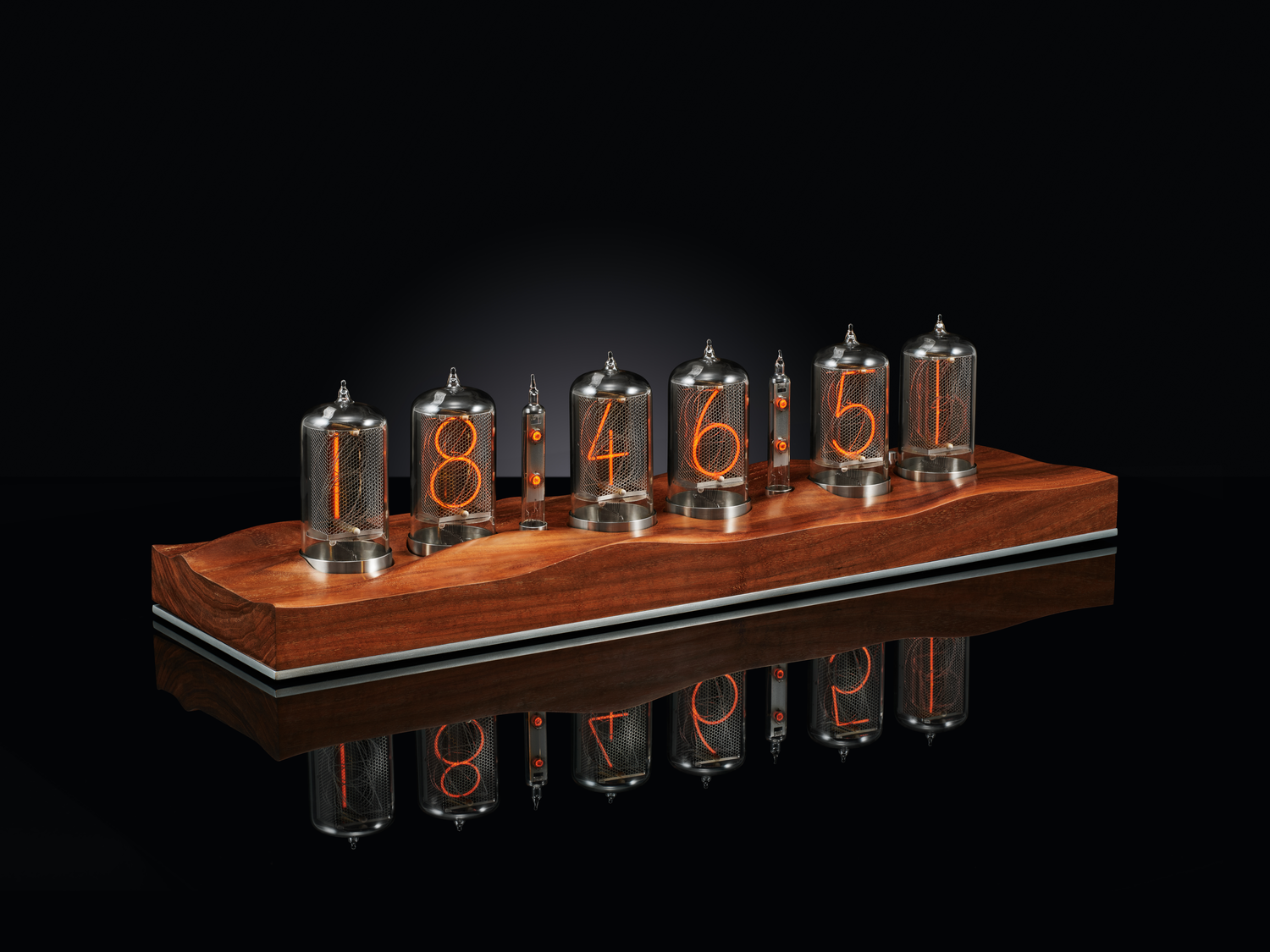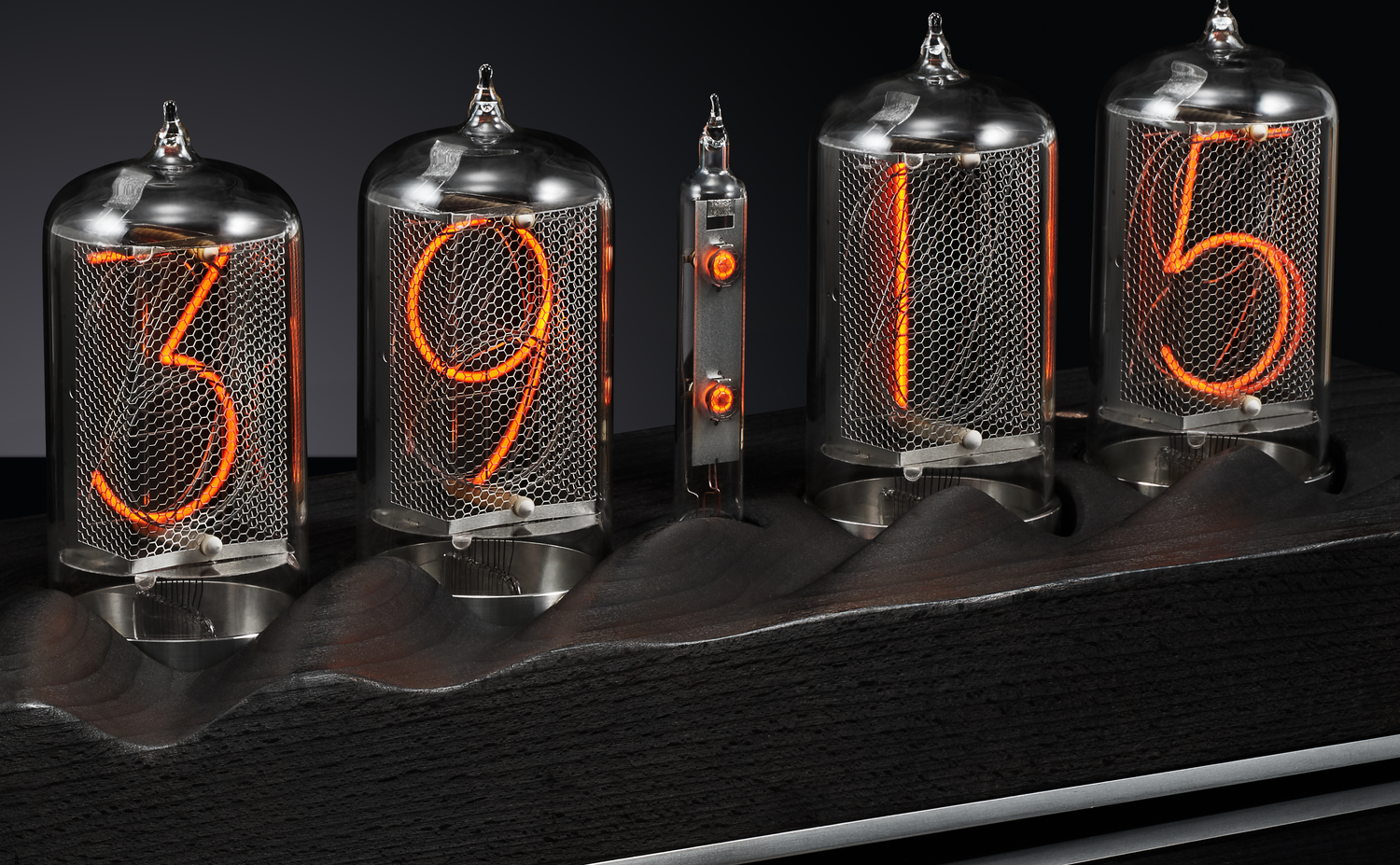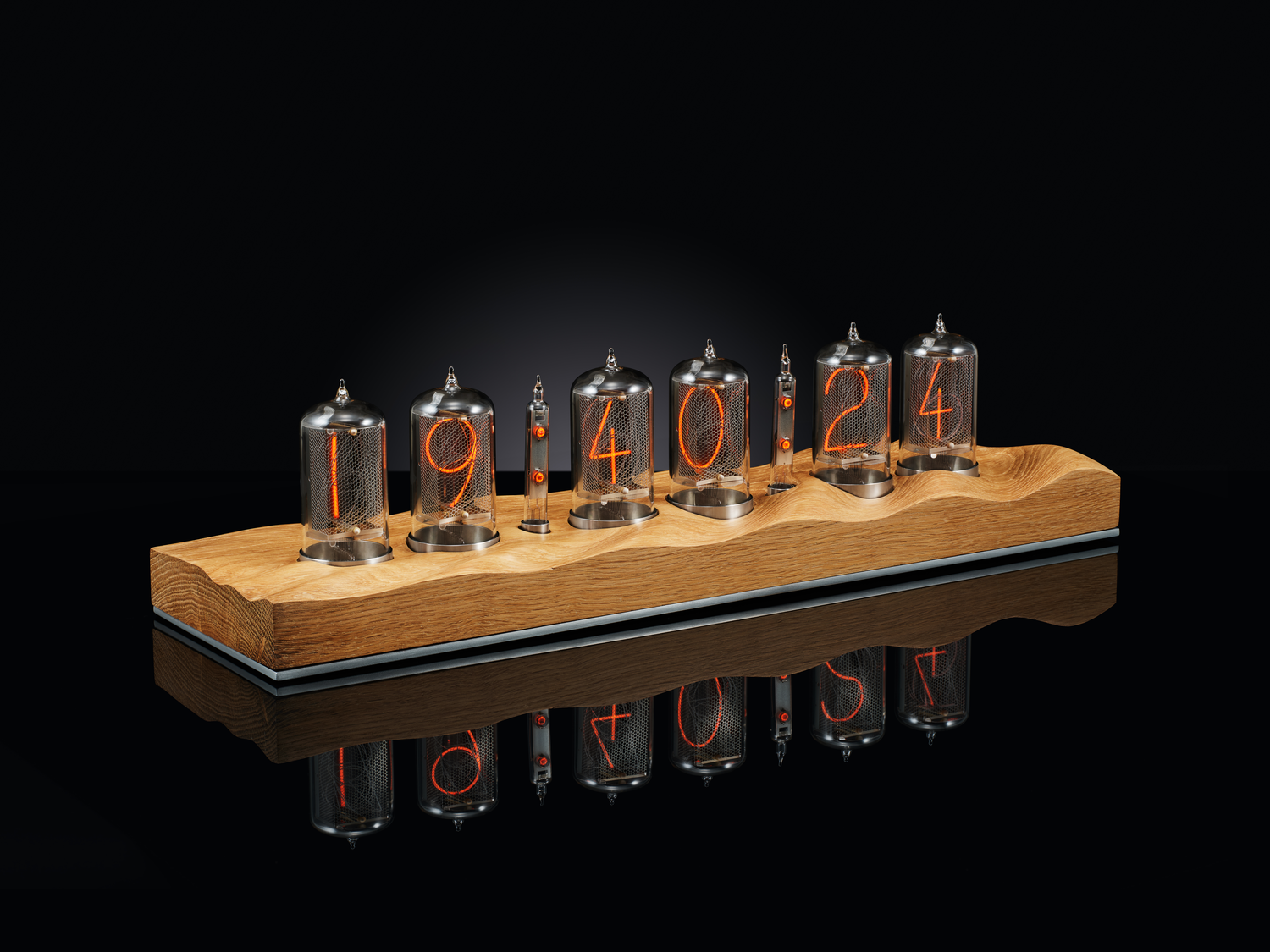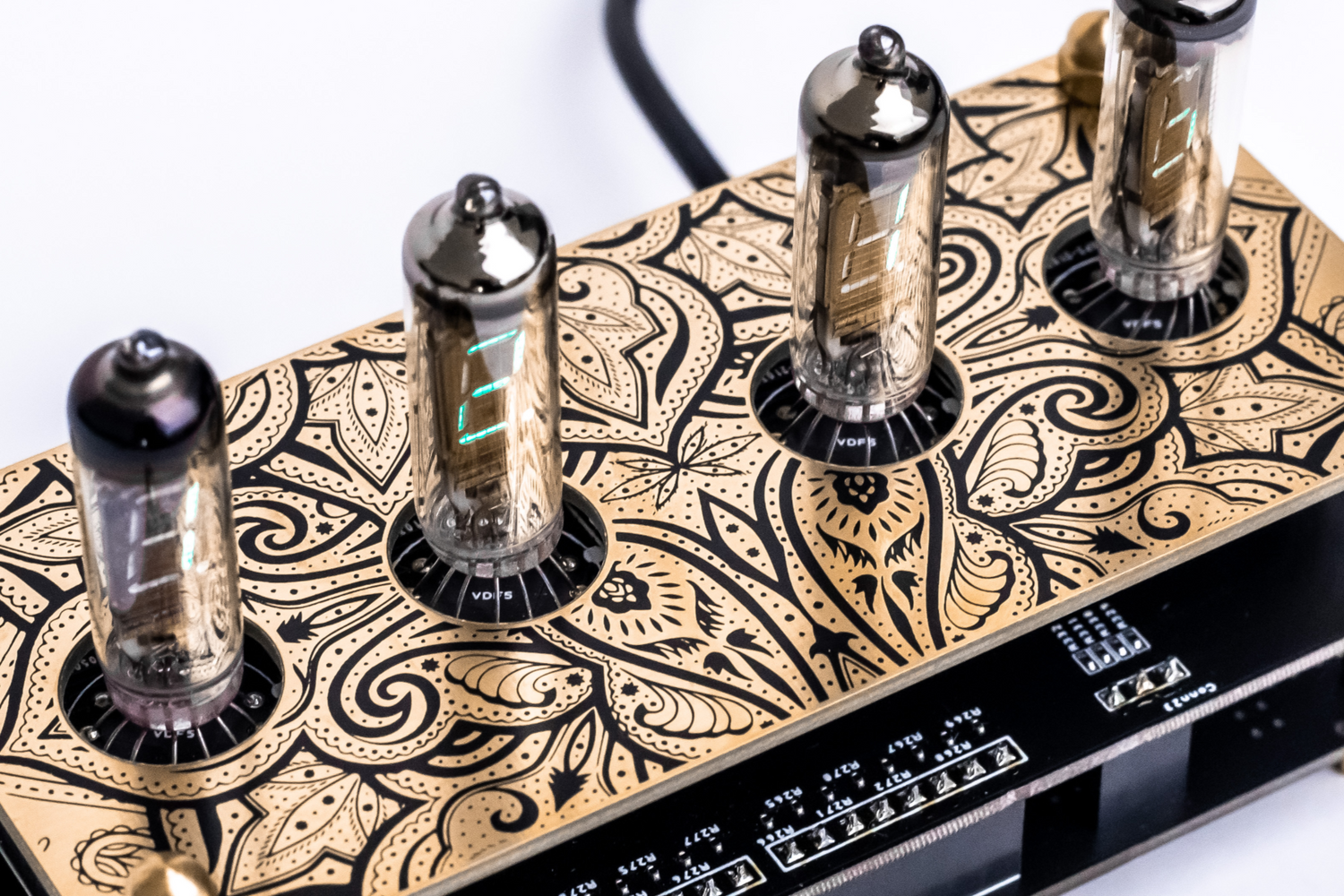
Who am I?
I am a physicist, engineer, and creator with a passion for turning unique ideas into tangible, high-quality products. From intricately designed clocks to handcrafted pasta boards and mathematical artwork, my work spans a diverse range of disciplines, blending precision with creativity. With years of experience in design, electronics, and product development, I not only bring my own creations to life but also offer bespoke services to help others realise their visions. Discover my work below.

Walnut Nixie Clock
This Walnut Nixie clock features Dalibor Farny Nixie tubes, custom-designed electronics, and a solid Walnut body with smooth, wave-like contours that complement the neon glow.

Burnt Beech Nixie Clock
This Nixie clock rests on a burnt-black Beech wood base, carefully sanded and waxed to reveal a rich, deep grain.

Oak Nixie Clock
This nixie clock pairs precision electronics with a carved base of solid English oak, shaped by a flowing wave pattern unique to each piece. The result is a refined, sculptural object that quietly draws the eye.

IV-3 Clock Kit
This unique desk clock showcases exposed electronics and PCB art, built with vintage IV-3 VFD tubes. Originally funded on Kickstarter, it's sold as a self-assembly kit and now resides in hundreds of homes.